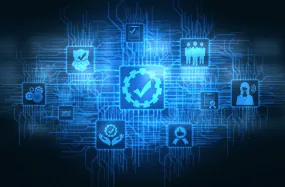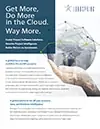
Taking Your Cloud Security to the Next Level

It is 2022, the Year of the Tiger.
What does that mean for cloud security?
By the end of the first quarter, many are rising with the sun and heading to bed later: giving predators, hackers, and cybercriminals more waking hours to attack your security infrastructure.
Refuse to stand for this. Be like the tiger. Make your cybersecurity roar.
Understanding standard methods and modes of attack, considering if your industry is at a higher risk, managing remote work environments, and implementing consistent cybersecurity policies will deter the attackers in 2022.
What kinds of cyber security breaches are most common this year?
The answer is it depends. As with holidays and cultural observances, data governance and business/company security policies vary based on geographic region or national policy. Top cybersecurity threats in 2022 include mobile device vulnerabilities, poor data management, inadequate post-attack procedures, and cloud vulnerabilities—all especially prevalent with the continued popularity of remote work environments.
Trusted cloud managed services providers understand these security vulnerabilities beyond how they can be detected and prevented via pen tests. For example, LoadSpring’s multilayered cybersecurity includes cloud defense, data protection, disaster recovery, and cloud support available 24/7, every day of the year, which means you don’t have to worry about regularly updating all your applications and software programs.
Energy, utilities, and disaster recovery
The energy sector is highly targeted and vulnerable to hackers partly because it struggles to attract qualified talent and is often burdened with outdated IT networks. When there is an event like a power outage—take last year’s cold snap and subsequent power outage in Texas—it’s even more critical to ensure compliance standards are updated and regularly maintained.
Although this is especially true in the energy and utility space, tighter protocols should be implemented for all industries, including architecture, engineering, construction, and telecommunications.
Costly cybersecurity risks are driven by remote work
The growing prevalence of both remote work and distributed networks makes airtight user provisioning and project controls management even more vital to maintaining the health and safety of IT networks. One straightforward action remote workers can take to reduce the risk of cyberattacks is to establish clear boundaries between personal and professional life tasks, especially when using work devices.
To that point, Security Magazine recently cited HP’s Blurred Lines & Blindspots Reports. Their survey found that 70% of respondents use work devices for personal tasks, and a whopping 30% have allowed someone else to use their work device. If HP hadn’t also discovered a link between gaming and personal devices used for work, this might not seem as problematic. There was also a recent increase in gaming-themed malware and remote workers using work devices for gaming purposes, which hackers are known to be exploiting.
The blurring of life and work boundaries leads to cybercrime and high costs for companies: $1,797,945 a minute, to be specific, according to the 2021 Evil Internet Minute. That’s a lot of money to spend on failing to make cybersecurity a priority. Gartner’s 2021 CIO Agenda Survey recently found that 61% of more than 2000 CIOs are increasing investment in cyber/information security in 2022, though, so here’s hoping that’s a sign of evolving priorities.
When networks and application infrastructure are expensive to maintain, a cloud platform-as-a-service (PaaS) establishes an impenetrable security landscape and ensures your cybersecurity is ever-evolving and staying ahead of the threats wherever your workforce is in place. A cloud-based platform automates your program updates and maintenance—making security and legal compliance worries a nonissue.
How cybersecurity policies and procedures protect
For the last two years, as companies have wrestled with the economic fallout from the ongoing pandemic, business continuity has become a popular buzzword among industries looking to remain viable and join others taking part in digital transformation and Industrial Revolution 4.0. Digital transformation means that cybersecurity and business continuity are no longer siloed in departments or spheres of influence. Cybersecurity policies are critical, and in regulated industries such as healthcare and finance, lax procedures mean running the risk of hefty penalties.
A recent Ponemon survey found that only 20% of respondents regularly communicate with management about threats, while 57% expected to experience a security breach within the following year. But according to Security Weekly, “Business continuity is about maintaining critical business functions, not only during a disaster or crises but also afterward. Traditional business continuity plans consider potential disruptions such as natural disasters, fires, disease outbreaks, and cyberattacks.”
Internal teams or trusted third parties must perform rigorous assessments that validate your security posture. One solution is choosing a cloud-managed services provider like LoadSpring. Cloud security protects your cloud-based applications and data through defined processes and accessibility controls. LoadSpring’s propriety LoadSpring Cloud Platform offers a robust security & support team, data monitoring tools like user provisioning, and a cyber security policy. Our unique globally scaled infrastructure, security, and innovation model will help your organization remain compliant and secure.
Zero Trust and the cost of cybersecurity incidents
Suppose you’re unsure about your organization’s current level of cybersecurity management, including asset identification and risk assessment. In that case, it is essential to adopt more comprehensive IT security models like Zero Trust to catch cyberattacks before they happen. Whether you expect them or not, attacks are hitting your system 24/7 in the Year of the Tiger and every year.
Zero trust assumes the network has been compromised and requires strict identity verification for every user and device. Zero Trust security counters risks with strict access control for everyone (and that really does mean everyone). Ensuring user provisioning is appropriately dealt with can mean the difference between meeting or exceeding budget projections for a significant project by avoiding the high cost of breaches. “By Q4 of 2021, the number of reported data breaches had already surpassed 2020 totals, which were historic in their own right. Collectively, 281.5 million people have been impacted by a data breach in 2021, while cybercrime costs companies $1.79 million per minute, demonstrating the across-the-board impact of today’s cybersecurity landscape,” according to Forbes. Don’t be the next organization recovering from a recent data breach.
Harvard Business Review reminds us that cyberattacks are inevitable: it’s not a question of if, but when? And when they do happen, how do you handle disaster recovery efforts considering tight deadlines that don’t adjust depending on extenuating circumstances or catastrophic world events? More importantly, what are you going to do to prevent the trust from lapsing in the first place? How can you prevent breaches or lapses of user management protocols before they occur?
At LoadSpring, we shelter critical project management data around the clock. Our security team implements Zero Trust protocols that continually run in the background while offering real-time, live support and optional, automated support through our SmartSupport system. We also boast a 15-minute support response time. Our security team adheres to ISO/IEC standards and is SOC 2 Type II certified.
Consider the one centralized cloud platform with security support that covers all your issues. The Year of the Rabbit 2023 is coming up fast. You can’t afford to be the White Rabbit from Alice in Wonderland muttering, “I’m late, I’m late, I’m late!”
Get started today. Contact us to get your free cloud assessment or call US +1 978 685 9715, or UK +44 800 088 5889.











